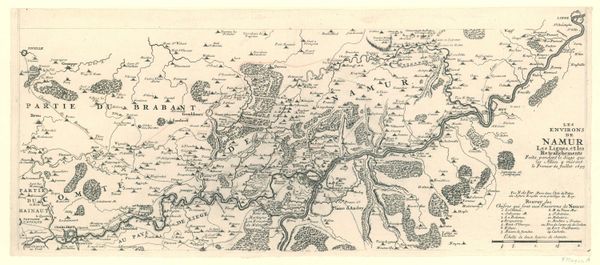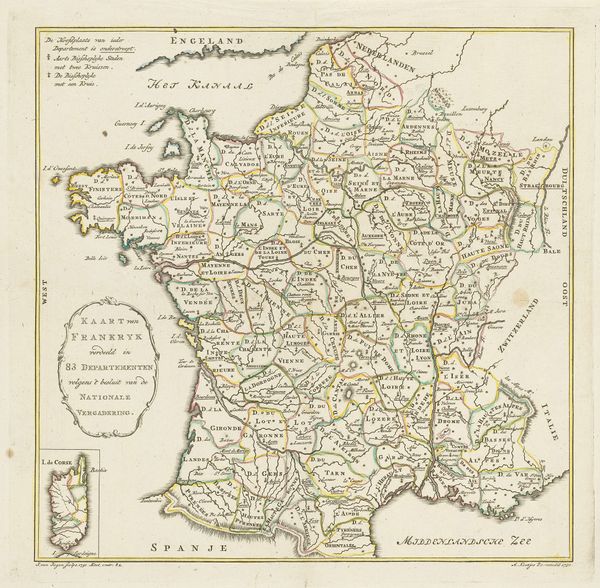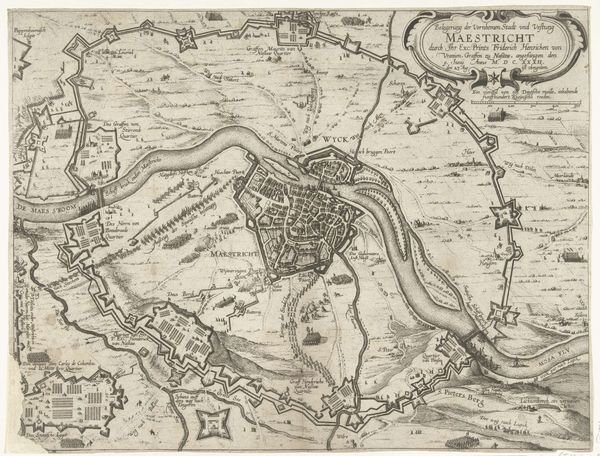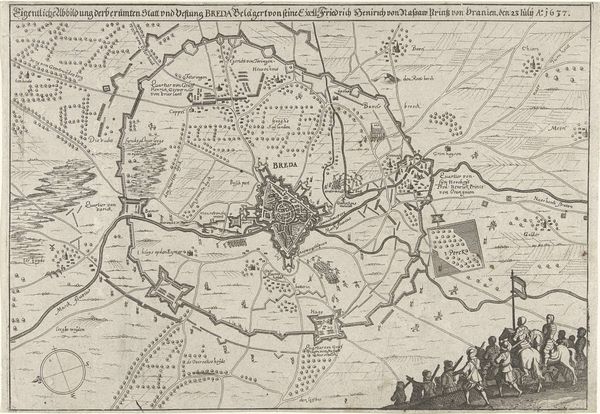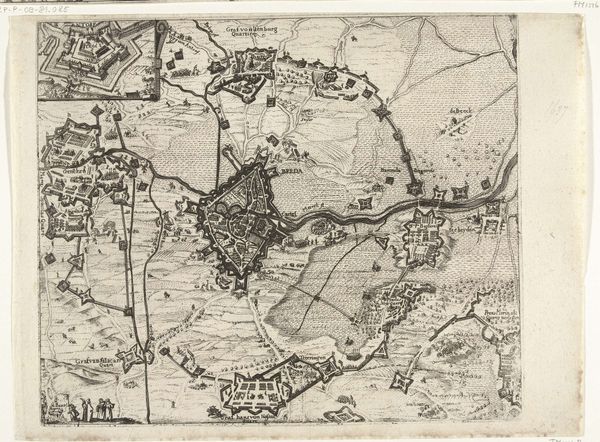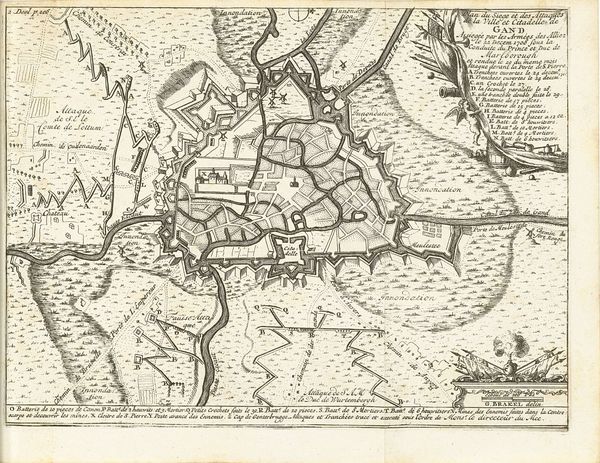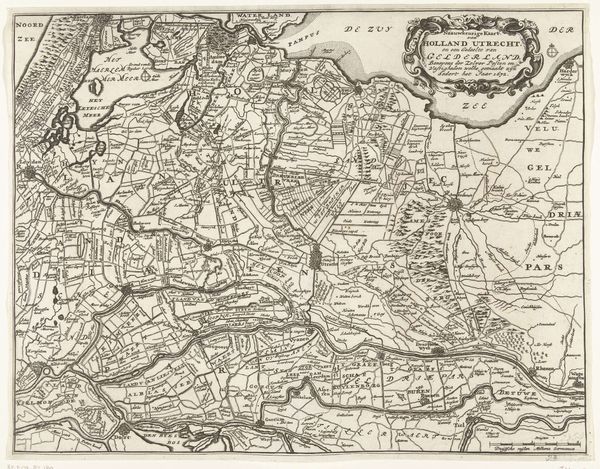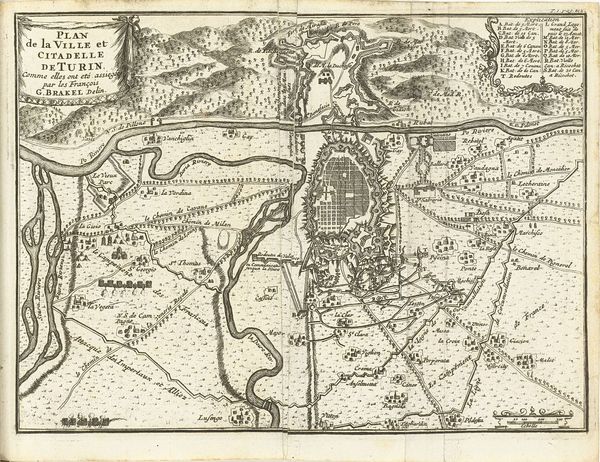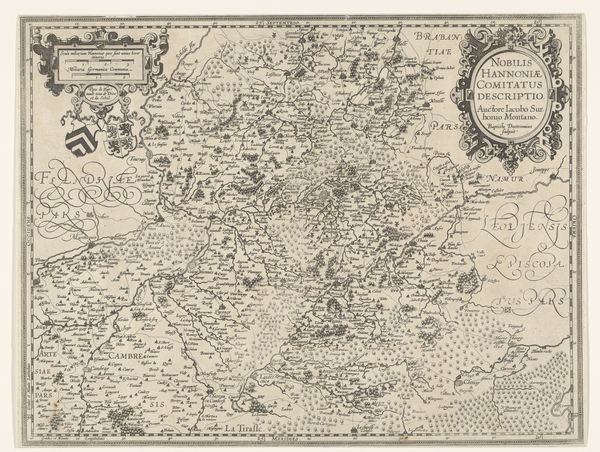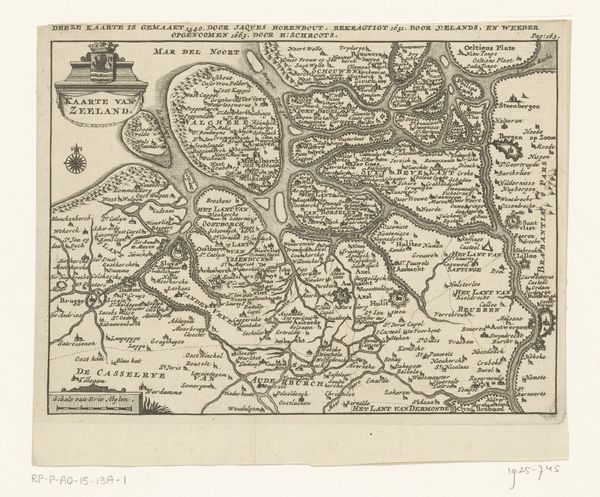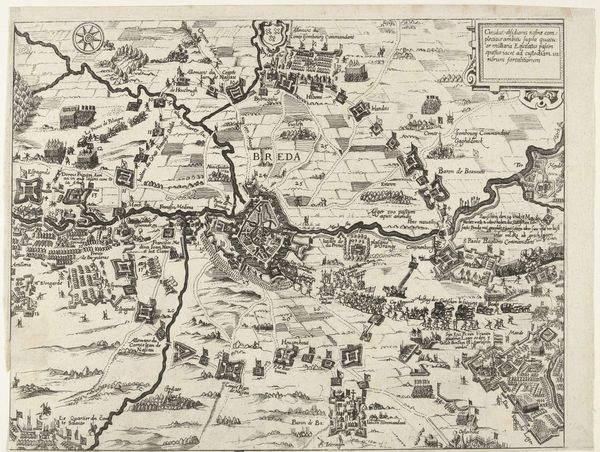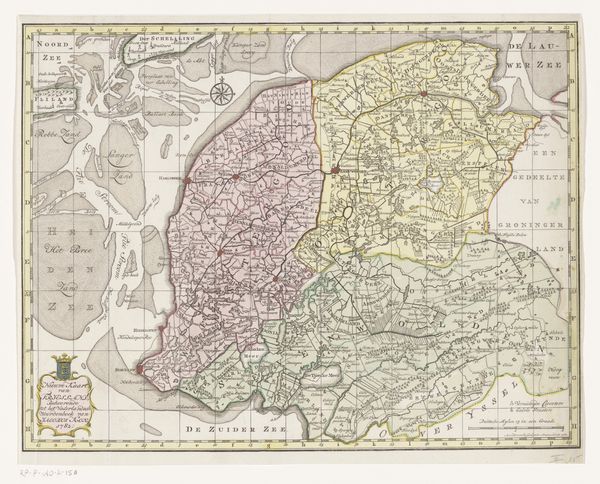
drawing, graphic-art, print, paper, ink
#
pen and ink
#
drawing
#
graphic-art
#
comic strip sketch
#
pen drawing
#
mechanical pen drawing
# print
#
pen illustration
#
pen sketch
#
old engraving style
#
landscape
#
paper
#
ink line art
#
ink
#
geometric
#
pen-ink sketch
#
pen work
Dimensions: height 340 mm, width 340 mm
Copyright: Rijks Museum: Open Domain
Curator: Upon viewing "Kaart van Friesland," produced by A. Durleu in 1762, my immediate thought goes to the texture, a visual density almost oppressive! The crisp lines of ink on paper are incredibly detailed, forming a latticework that defines the province. Editor: The texture really speaks to the process and precision required to make something like this. It’s graphic art—a drawing rendered as a print. We see how ink, a humble material, articulates land, governance, and even social standing. Think about the engraver’s labor shaping geographic ideology! Curator: Precisely. That detail serves a symbolic function. Maps, especially those commissioned by or for governing bodies, always carry layers of meaning beyond geographic representation. Note the heraldry and ornate flourishes: power encoded in visual language. Friesland’s identity and relationship to its neighbors are communicated via very specific and understood symbols. Editor: It also highlights consumption. These prints were made to be distributed and possessed, becoming tools for visualizing control of territory and trade routes. The act of holding the map signifies participation in, or perhaps aspirations toward, Friesland's social structure. Curator: Indeed, the landscape is essentially being packaged, tamed, and commodified. The scale of Friesland, in this image, becomes understandable to the individual user, which reinforces power structures and social order in their everyday experiences. This map isn’t just about geography; it’s about political performance and personal identity. Editor: Seeing the "old engraving style" used, I immediately think of the tools—the metal plates, the etching acids—and the knowledge these engravers possessed. Curator: What strikes me most, then, is the continuity. Despite being almost three centuries removed, the encoded messages within these symbols persist. This is how culture echoes itself across time. The pen illustrates both territory and heritage. Editor: I would add the "pen sketch" underscores the value placed on artistry and craftsmanship and is evidence of how maps, even as informational objects, could be incredibly aesthetic achievements—or even investments. Curator: Looking at "Kaart van Friesland," one begins to appreciate how something utilitarian, like a map, acts as a repository for collective memory. Editor: And by examining the physical object, we learn about the cultural and economic circumstances that allowed its existence. These works are testaments to human ingenuity and its application across varying scales.
Comments
No comments
Be the first to comment and join the conversation on the ultimate creative platform.
